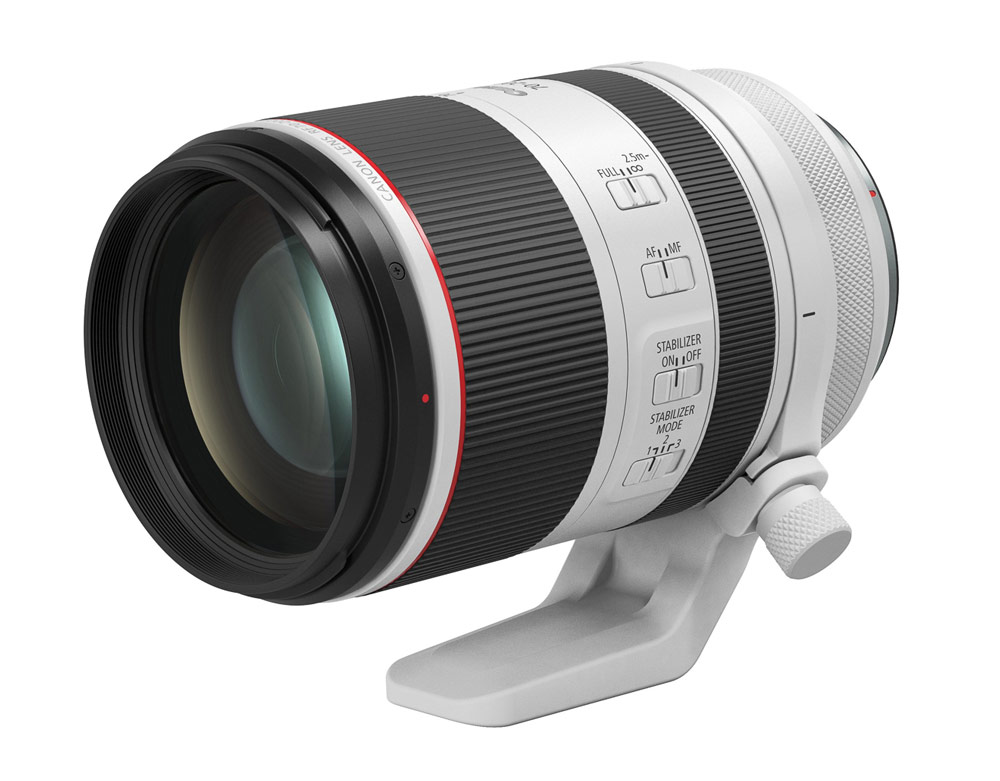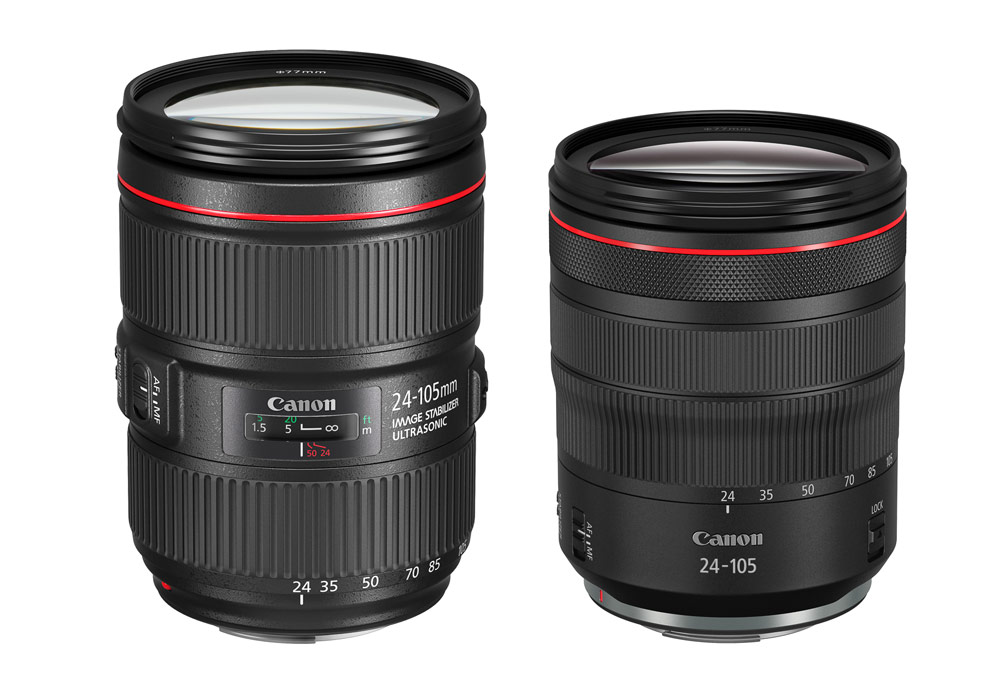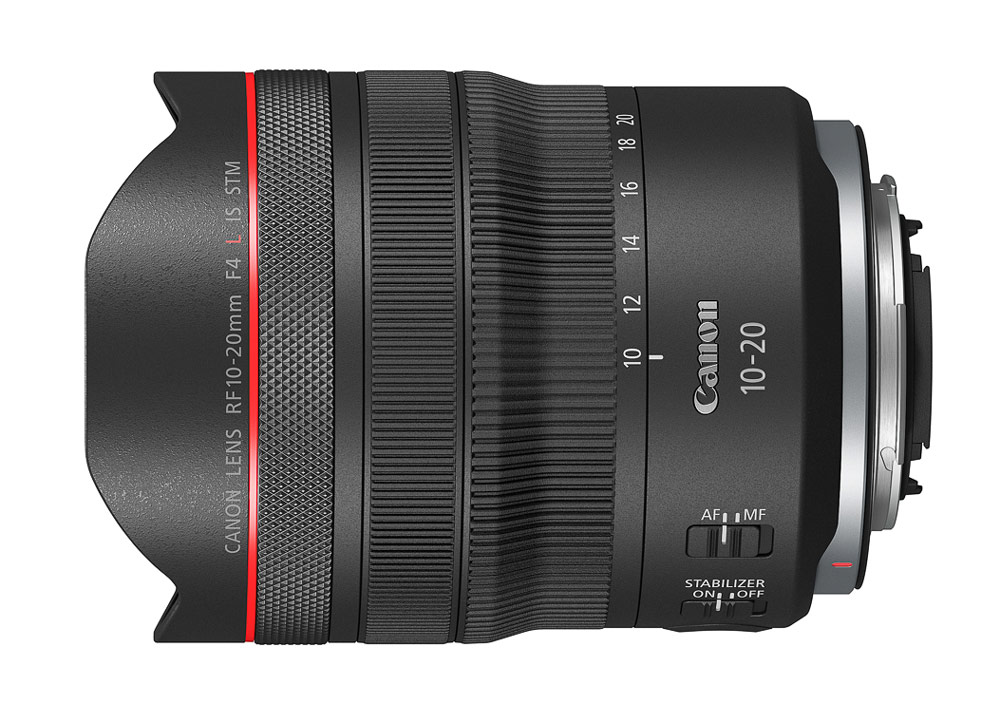Advertising feature
Introducing a new lens mount is a once-in-a-generation event and it’s a seriously big deal for everyone concerned. So, why do camera companies change lens mount and what’s the benefit? Here, we take a close look at Canon’s RF mount, the central cog of its mirrorless system, and how you can save up to £300 with the company’s Lens Reward promotion.
Camera companies change a lens mount only when the time is right. Canon went in-body autofocus in 1987 with the EOS 650 and a new mount was needed because the long established FD mount had mechanical linkages that could not support the required technology, so the fully electronic EOS EF mount with a diameter of 54mm was born.
Times change, of course, and while DSLRs remain hugely popular, mirrorless cameras is the way forward and Canon is in the vanguard of this exciting technology that brings huge benefits to all image creators.

Two generations together. The Canon EOS EF mount (left) was developed to enable in-body autofocus, and while the EOS RF mount is the same diameter it offers a host of important benefits.
Since its launch in 2018, the Canon EOS R mirrorless system has become firmly established with a prodigious selection of cameras and lenses and its success is testament to the innovative RF mount.

Canon’s RF lens mount has an internal diameter of 54mm which means cameras with in-body image stabilisation can move the sensor around the lens’s image circle without any cut-off. Image credit: Will Cheung
The RF lens mount has the same wide 54mm diameter of the EF mount, but there are important differences. The new mount uses 12 communication pins compared with eight of the older mount, and with no reflex mirror mechanism in the light path, there’s a much shorter back focus. These two key innovations have given Canon’s designers the freedom to develop features, technologies and optical products simply not possible with the previous lens mount.
Canon RF mount: the benefits of fast communication
The RF mount with its 12 contact pins allows a very rapid data exchange between the camera and lens as well as providing greater bandwidth for data transfer, and there’s headroom for future advances too.

The previous EOS EF mount had eight communication pins, compared with the 12 pins featured in the EOS RF mount (above). The extra pins allow faster communication between the camera and lens and greater data transfer capacity. Image credit: Will Cheung
Several EOS R cameras have in-body image stabilisation (IBIS). The first Canon cameras to feature IBIS were the EOS R5 and EOS R6 and the five-axis system give a market-leading 8-stops of stabilisation. The degree of benefit depends on the lens in use and with the RF 24-105mm F4L IS USM lens at 105mm there’s 8-stops of IS benefit with the combined efforts of IBIS and lens-based optical IS (OIS).
That incredible level of performance is possible with lenses including the RF 28-70mm F2L USM and RF 85mm F1.2L USM that do not have any integral optical image stabilisation. With their large image circle, and thanks to the wide diameter of the EOS R mount, the sensor of IBIS-equipped models has more room to move to offset camera shake.

Shooting at very slow shutter speeds is possible thanks to image stabilisation systems such as that found in the Canon EOS R5. Here, the EOS R5 with the 14-35mm F4L IS USM was used to shoot The Museum of the Moon in Hexham Abbey using a handheld exposure of 1/2sec at f/8 and ISO 800. Image credit: Will Cheung
The high-speed dialogue between the camera and lens even gives a benefit when non-IBIS equipped Canon EOS R cameras are fitted with OIS equipped lenses.
The gyro sensor in the lens detects shake and movement while the camera sensor’s Dual Sensing IS system picks up low frequency shake risks including the user’s heartbeat or breathing, and all this extra data be employed to give an extra half-a-stop or more stabilisation.
In practice, Canon EOS R cameras and lenses can be used for handheld shooting at shutter speeds that were previously considered impossible for tack-sharp stills and gimbal-like super-smooth video footage.

The EOS R7 was one of Canon’s first APS-C format cameras utilising the EOS RF mount. With the RF-S 18-150mm F3.5-6.3 IS STM fitted, the stabilisation benefit is up to 7-stop benefit while with the RF 24-105mm F4 L IS USM this increases to 8-stops. Image credit Canon
Canon RF mount: autofocus
Canon cameras have always excelled at autofocus, but the speed and bandwidth of the RF mount takes AF to the next level. With the EOS R5 and EOS R6, focus can be acquired in 0.05sec and the subject then tracked as it moves rapidly across the whole image frame.
New AF technologies can also be exploited. The RF 70-200mm F2.8L IS USM is the first lens with Dual Nano USM technology, with two separate motors driving different lens groups but working in partnership to give rapid and efficient autofocus.

Impressively compact for its focal length range and wide constant maximum aperture, the RF 70-200mm F2.8L IS USM is Canon’s first lens with Dual Nano USM technology. Image credit: Canon
Canon EOS RF mount: more about back focus
DSLR cameras have a sophisticated reflex mirror arrangement to provide the through-the-lens viewing image. When the shutter button is pushed, the mirror swings out of the light path and returns the instant the exposure ends. With space needed for the reflex mechanism there was a significant distance from the rear-most lens element to the sensor plane.
In EOS DSLR cameras, this distance or the back focus was 44mm but with EOS R cameras not needing a reflex mirror means back focus is just 20mm. Being able to position lens elements closer to the focal plane has given Canon’s lens designers more freedom in design including the ability to create lighter, more compact lenses.
Let’s take the example of one of the first zooms many Canon owners buy, the 24-105mm. The EF 24-105mm F4L IS II USM weighs 795g and measures 118mm in length while the RF 24-105mm F4L IS USM checks in at just 700g and is 107.3mm long.

Standard zooms side by side. The EF 24-105mm F4L IS II USM (left) hits the scales at 795g and measures 118mm while the RF 24-105mm F4L IS USM is over 10% lighter at 700g and is 107.3mm long. Image credit: Canon
The difference is even more pronounced in the popular 70-200mm telezoom. The EF 70-200mm F2.8 L IS weighs 1440g and measures 199mm while the RF 70-200mm F2.8L IS USM is 1070g and 146mm long. Factor weight and space savings across a multi-lens system, and the practical benefits of going mirrorless are significant.
Not having to compromise optical design to allow for a 44mm back focus, also means the lens designers can prioritise optical performance in RF lenses. Having larger diameter, rear-positioned lens elements closer to the sensor plane can reduce lens aberrations and give superior edge to edge image sharpness without any light fall-off. There’s also the potential for faster lenses for a given focal length.

Ultra-wide lenses can suffer from a drop-off in light levels and sharpness in the corners of the picture frame. No such problems here on this image of Gloucester Cathedral cloisters taken with the RF 14-35mm F4 L IS USM at 14mm on an EOS R5. Image credit: Will Cheung
Save money with the Canon Lens Reward promotion
If you are thinking of investing in the EOS R mirrorless system, now’s the time to take advantage of Canon’s Lens Reward promotion. Until 31 August 2024, buy an EOS R camera from Canon’s official online store and participating retailers and you can claim up to £300 cashback on each of your next five lens purchases. For more details click here.
Another illustration of the potential of the RF mount comes with the recent launch of the RF 10-20mm F4L IS STM, the world’s widest full-frame zoom. It offers a wider angle of view than the EF 11-24mm F4L USM but even with a newly developed OIS, the RF 10-20mm F4L IS STM is much more compact and less than half the weight at 570g compared with 1180g.

The latest addition to Canon’s quickly expanding RF lens system is the RF 10-20mm F4L IS STM, the world’s widest full-frame zoom. Image credit: Canon
The improved camera/lens communication speed has extra benefits. All RF lenses have a Lens Control ring in addition to the standard focus and zoom rings; in some instances, there’s a single control ring is switchable between focusing and a custom function.
The Lens Control ring, via the camera menu, can be customised to perform different roles including changing aperture, exposure compensation and ISO. It gives a fast way to adjust settings while you are concentrating on what’s happening in the viewfinder.
Canon EOS RF mount: beating distortion
There is also the benefit of in-camera lens aberrations correction with real-time Digital Lens Optimisation (DLO). Prior to the RF mount, lens correction data had to be manually downloaded to enable the camera to apply it when a particular lens was used.
With the RF mount’s ability to handle lots of data very rapidly, DLO data can be stored within RF lenses and read automatically by the camera’s image processors and corrections can even be applied during continuous shooting without hindering drive speed or frame capacity.
Canon EOS RF mount: summary
While Canon continues to support the EOS EF mount, the advances made possible by the EOS RF mount (and with the camera market moving inexorably to mirrorless photography), it’s inevitable that the brand is focused on exploiting the fresh opportunities provided by the new mount.
We’ve discussed the key advances to date, but with the EOS RF mount’s potential there’s very likely to be much more to come.
Further reading
Best Canon mirrorless cameras in 2023
Best Canon mirrorless lenses in 2023








